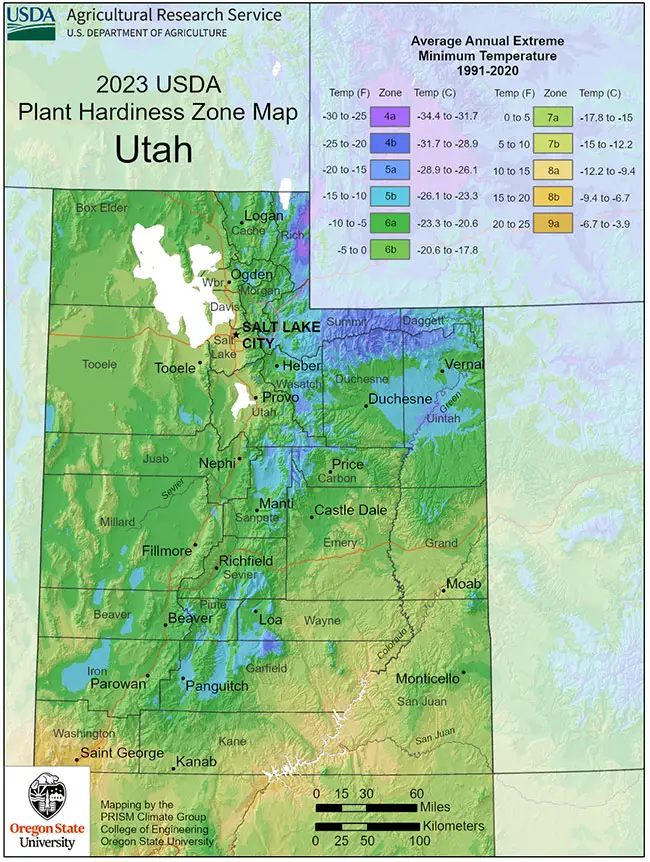
In Utah, you can successfully cultivate cold-hardy palm trees that exhibit remarkable durability and adaptability to desert conditions.
Utah boasts a semi-arid to arid climate, characterized by pleasant weather featuring warm summers and mild winters. Approximately 33% of the state comprises true desert areas, where winter temperatures typically average below 32°F during the winter months.
In contrast, the average temperature in July reaches around 78°F (26°C), while January’s average temperature hovers at approximately 28°F (–2°C).
Utah receives an annual average of about 59 inches (150 cm) of snowfall. The primary chain of the Rocky Mountains often acts as a protective barrier, shielding Utah from the frigid Arctic air masses moving down from the north.
The state’s climate has seen extreme temperature fluctuations, with the highest ever recorded temperature reaching 117°F (47°C) and the lowest plummeting to a chilling -69°F (–56°C). Utah’s USDA hardiness zones span a range from 4a to 9a.
Growing Palm Trees in Utah
Since some of the Utah has desert climate, select palm trees that are durable and will tolerate desert conditions. Here are some of the palm trees that can be grown in Utah:
- Bismarck Palm Tree – Zones 8b – 11 (15 to 20F)
- Caranday Palm Tree – Zones 9a – 11 (20 to 25F)
- Mexican Fan Palm Tree – Zones 8b – 11 (15 to 20F)
- Mazari Palm Tree – Zones 6b – 11 (-5 to 0F)
- Triangle Palm Tree – Zones 10a – 11 (30 to 35F)
- Saw Palmetto Palm Tree – Zones 7a-11 (0 to 5 F)
- Pindo Palm Tree – Zones 7b-11 (5 to 10 F)
More Palm Trees»
Major Cities in Utah
Provo – Hardiness Zone 6a
Salt Lake City – Hardiness Zone 8a
Sandy – Hardiness Zone 7a

I would like update information on best palm trees for my area. Currently I shall be moving. May you help select the appropriate palm tree for the area I amean moving too? thank you.